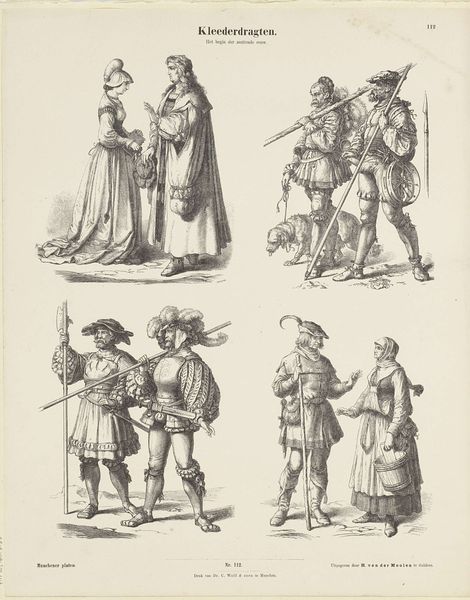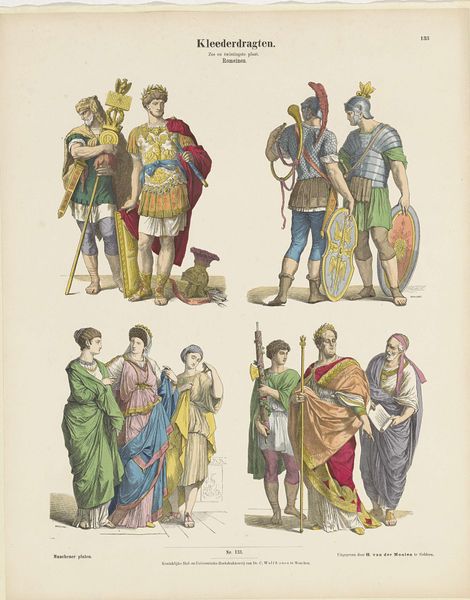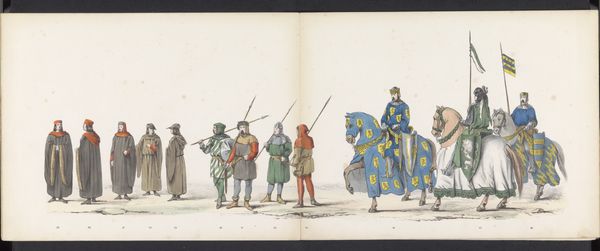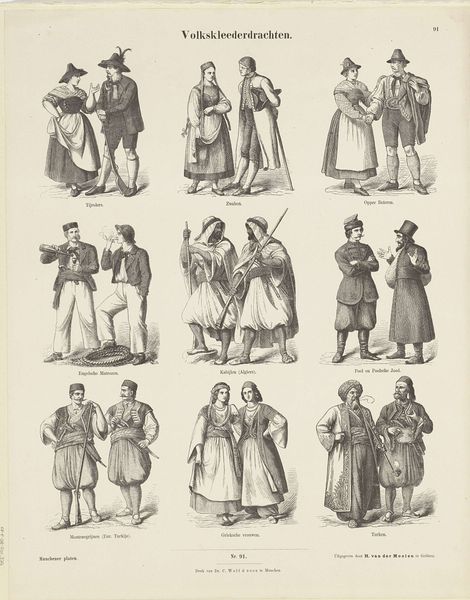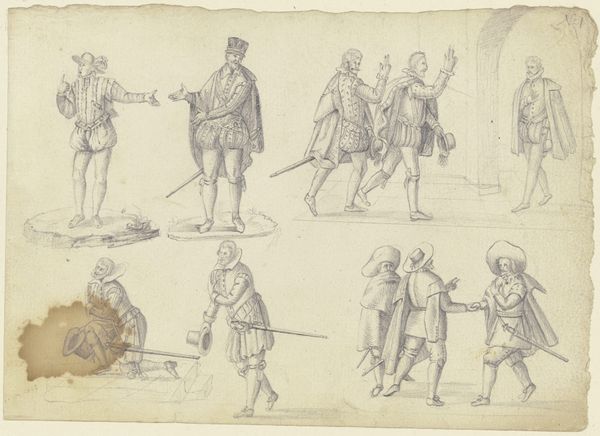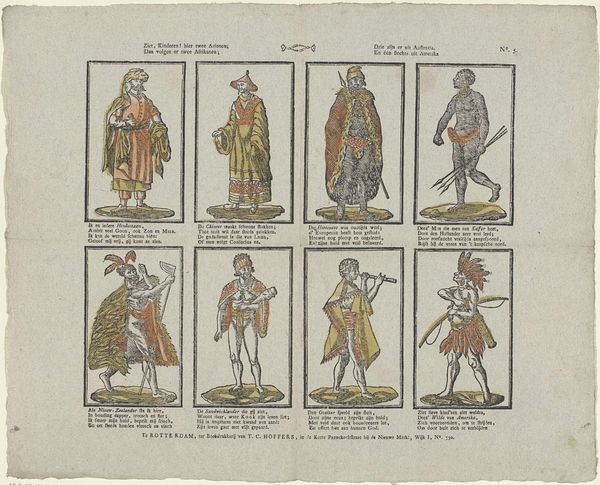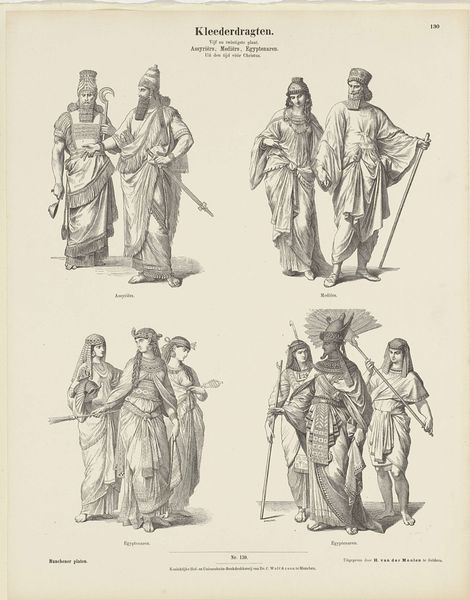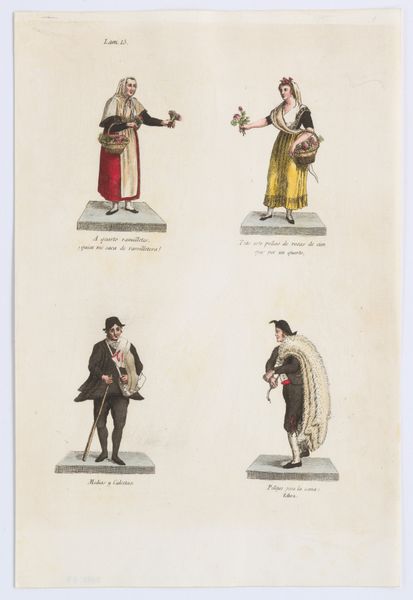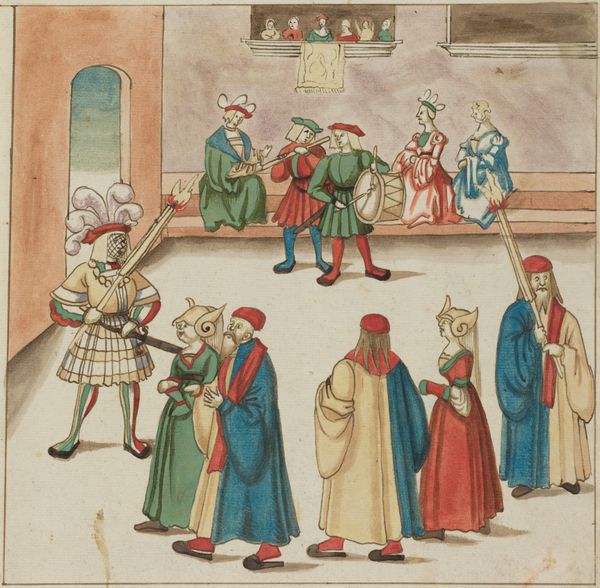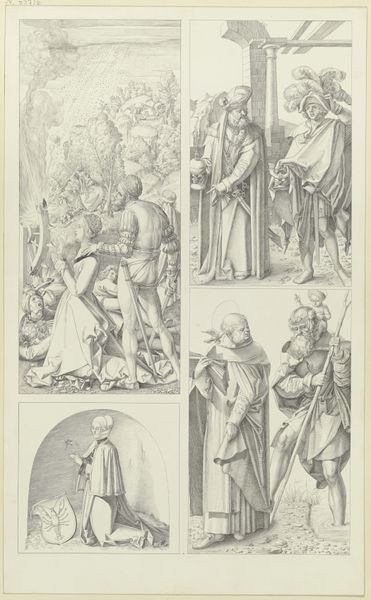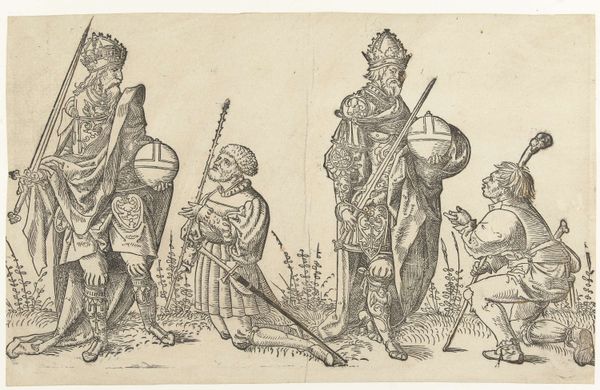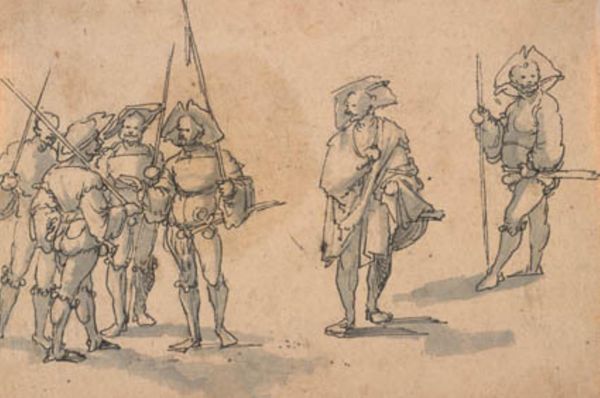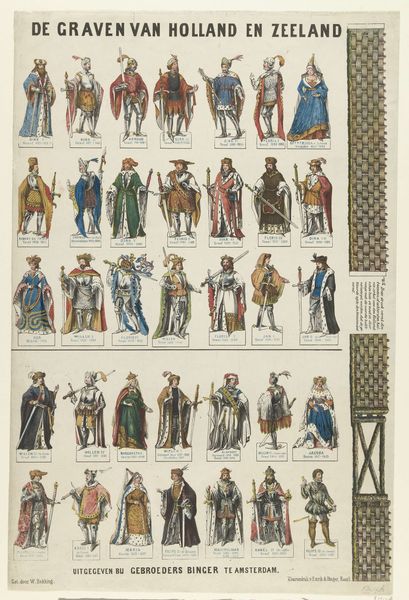
# print
#
figuration
#
watercolour illustration
#
genre-painting
#
history-painting
#
realism
Dimensions: height 442 mm, width 350 mm
Copyright: Rijks Museum: Open Domain
Editor: This print, titled *Kleederdragten / Het begin der zestiende eeuw* – or roughly translated, “clothing styles from the early sixteenth century” – is attributed to Ernst Frölich and dates sometime between 1843 and 1920. It presents what look like studies of various figures, meticulously detailed in their period garments. I’m immediately struck by the level of detail – each character feels like they’re stepping out of a history book. What symbols or historical associations jump out at you? Curator: Indeed! These aren't merely fashion plates. Think of the layers of meaning embedded in clothing itself. The cut, the fabric, even the accessories signal social standing, regional identity, and moral values. Notice, for example, the elaborate plumes on the nobleman’s helmet. What do they tell us about status and identity compared to the plain attire of the peasant woman carrying the bucket? Editor: The contrast is stark. One's about display, the other about utility. But beyond the obvious, what about the colors used? Curator: Color, too, holds significance. During this period, certain dyes were incredibly expensive and only accessible to the wealthy. The rich, deep hues on the nobleman’s garments denote privilege and power, acting as a visible declaration of his position in society. The artist uses this, subtly perhaps, to critique social structures or celebrate a shared cultural history. Do you think there's an element of nostalgia present? Editor: That’s a really interesting question. Perhaps a longing for a past perceived as more… ordered, maybe? I never considered clothing in art offering this perspective. Curator: Exactly. These figures, seemingly frozen in time, prompt us to reflect on how visual symbols—like clothing—shape and transmit cultural memory. Editor: This makes me look at the print in an entirely new way. Thanks for opening my eyes to the world of visual symbols!
Comments
No comments
Be the first to comment and join the conversation on the ultimate creative platform.
